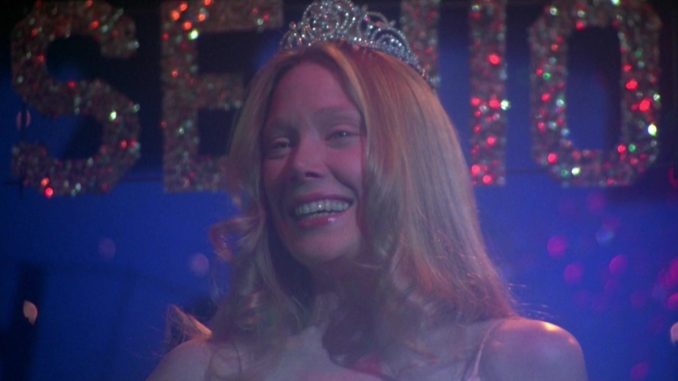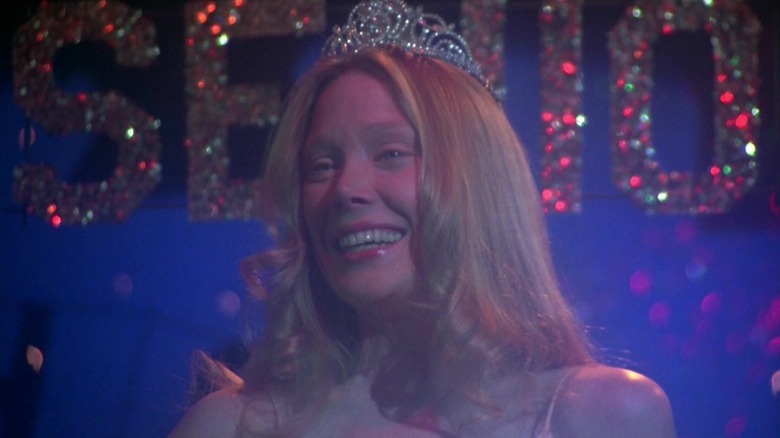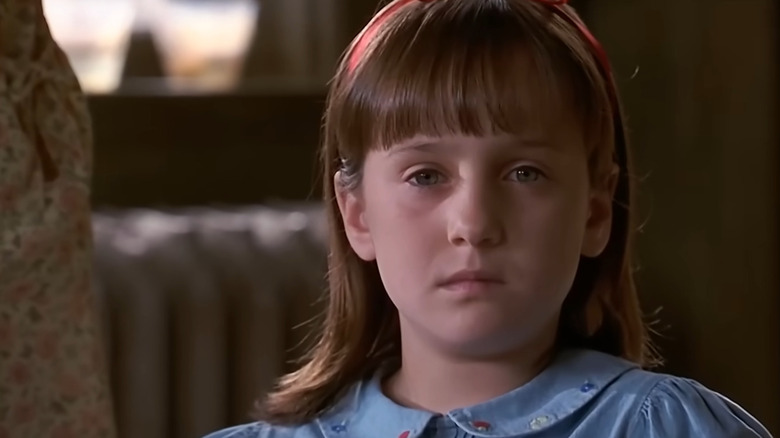
You tend to notice a lot of familiar names, places, and events throughout the work of Stephen King, and that’s by design. The horror maestro has carefully constructed a universe that ties most of his iconographies within the same plane of existence, especially if they involve the words “Castle Rock” or “The Dark Tower.” In this case, that kind of interconnectivity also presents an opportunity for fans to impart their own head canon not just with King landmarks, but other pop culture mainstays as well.
In today’s course of internet fan theory, telekinesis gone wrong is the name of the game. We’re gonna be looking at one that attempts to merge King’s book “Carrie,” a tale about the ultimate horror prom queen, with the Roald Dahl novel “Matilda,” a story about an inquisitive young girl whose abilities don’t lead to quite as much bloodshed. One Redditor has claimed the two fictional characters are the same person, with “Matilda” acting a prequel to the fiery events put into motion by “Carrie.”
Said fan theory posits the idea that after the events of “Matilda,” Miss Honey, haunted by the memories of Miss Trunchbull in her family house, moved to Maine with her newly adopted daughter under the names Margaret and Carrie White. In the midst of homeschooling Matilda, Miss Honey then fell down a religious rabbit hole and became a disturbingly pious maternal figure. The trauma, in turn, caused Matilda to become Carrie, the shy and reserved high school girl imagined by King … that is, until the prom night that unleashed her telekinetic abilities to the max.
A cute theory that doesn’t Carrie much weight
There’s a Thought Catalog piece that expands upon this theory’s legitimacy. It argues that Miss Honey and Matilda could’ve changed their names to avoid Matilda’s neglectful father, Harry, asking them for money later down the line. The piece also tries to explain why Dahl’s source material doesn’t grapple with its darkest themes, given that its story is meant for children after all. But for as fun as this is to think about, it’s a really easy theory to pick apart.
For starters, the theory never makes it clear whether it’s speaking on behalf of “Carrie” and “Matilda” as books or movies, both of which flounder when you look at timelines. King’s “Carrie” is a 1974 novel that takes place in 1979, while Dahl’s “Matilda” was both written and takes place in 1988. If we’re going by the first film adaptations, the events of Brian DePalma’s “Carrie” transpire in 1976 while the Danny DeVito-directed “Matilda” takes place in 1996. There’s also the matter that the source material for “Matilda” is set in England, as opposed to the U.S.
This theory also alleges that the FBI caught up with Harry after he sold a faulty Plymouth that killed someone and also happens to be “Christine” under a different name. But if we’re getting technical, allow me to put on my best Mona Lisa Vito voice when I counteract. After all, Matilda’s father was working on a 1961 Plymouth Valiant, while “Christine” was a 1958 Plymouth Fury. I’m positive.
Basically, you have to jump through a lot of hoops to make it all fit. The only way these two stories could reasonably work together requires imagining Matilda as another telekinetic young girl hidden within the King-verse in the vein of Charlie from “Firestarter” and Abra from “Doctor Sleep.” Trauma can change people, but it also seems strange that Miss Honey and Matilda, two very kind characters with momentary lapses into darker waters, would become such extremes.



Leave a Reply